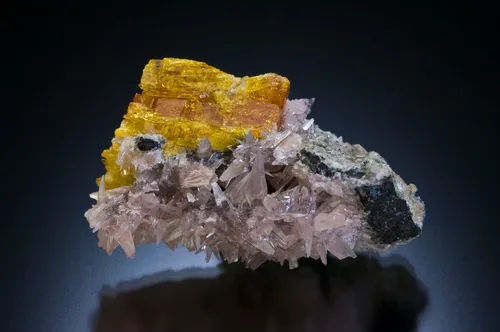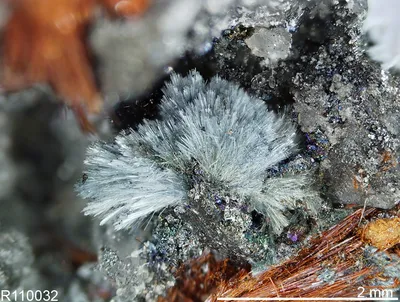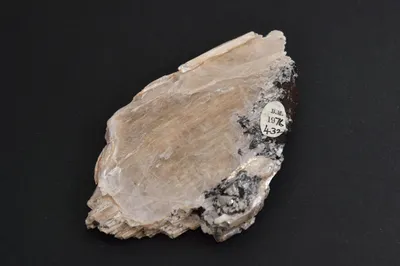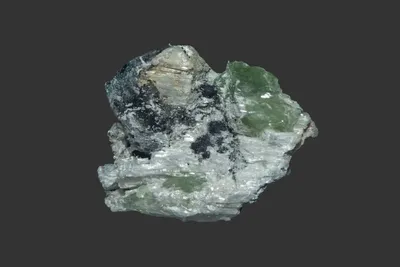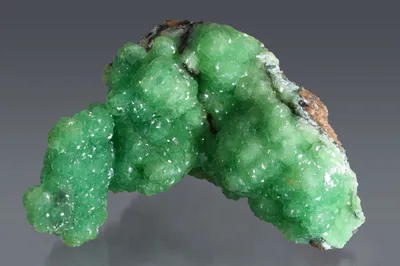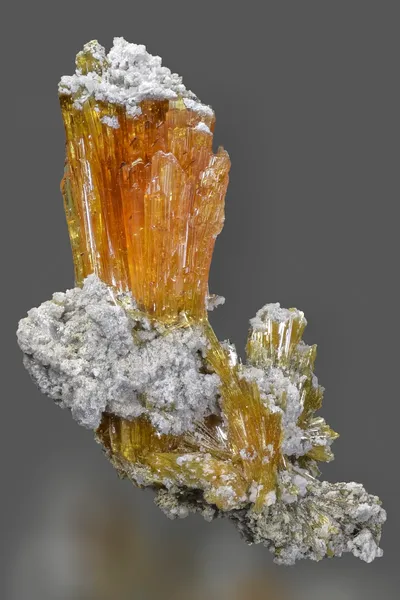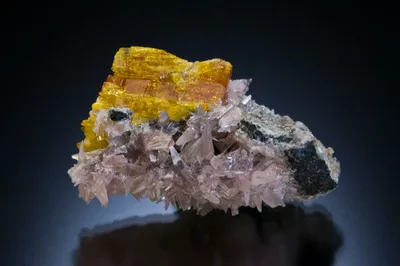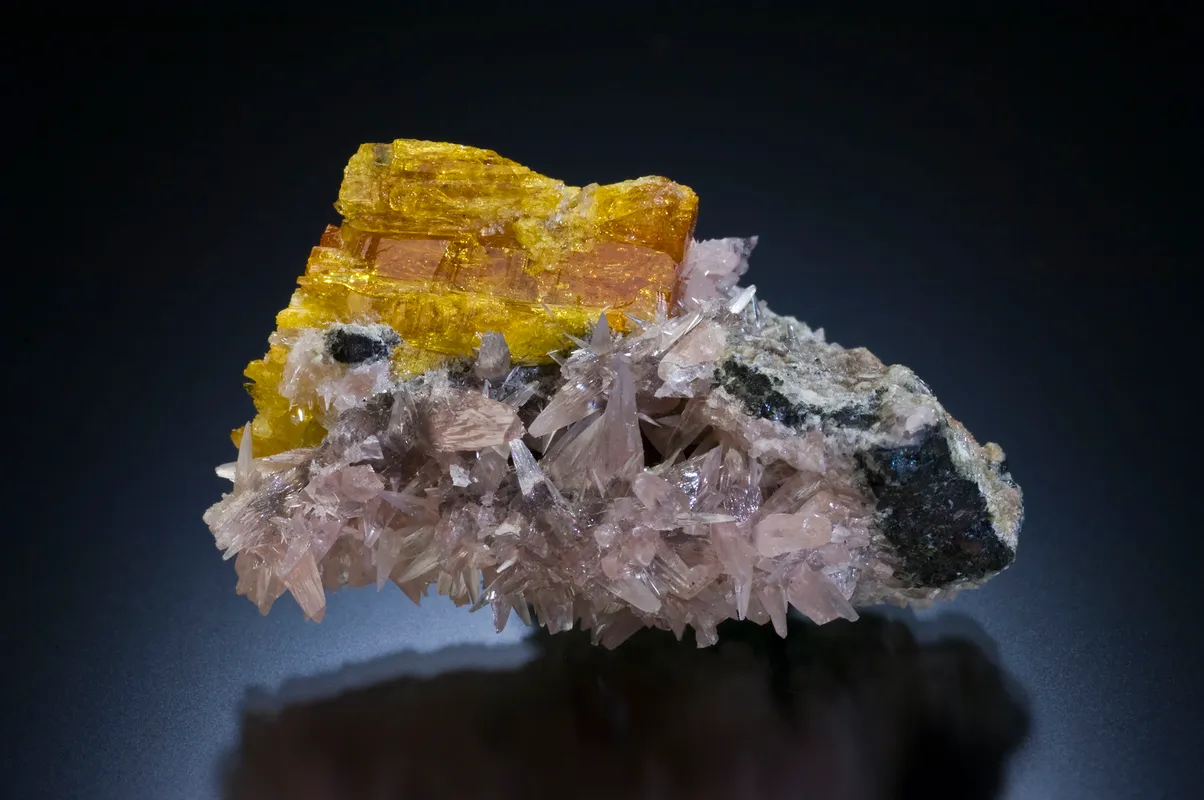
Image Credit: Jeff Scovil
Mineral Species
Legrandite
Type Locality
No
Composition
Zn2(AsO4)(OH)·H2O
Crystal System
Monoclinic
Status at Tsumeb
Confirmed
Abundance
Very rare
Distribution
Second and third oxidation zones
Paragenesis
Supergene
Entry Number
Species; TSNB208
General Notes
Legrandite was first encountered in the second oxidation zone on 31 Level in March, 1978, as brilliant orange-yellow radiating masses, with single crystals (to nearly 10 mm), associated only with smithsonite (Keller and Bartelke 1982).
No further examples of legrandite were found until the early 1990s, when the so-called "Zinc Pocket" was discovered on 44 Level in the third oxidation zone (Gebhard 1999). Terminated legrandite crystals to 20 mm were found, intense orange-yellow and highly transparent, in attractive associations with pink smithsonite, adamite, leiteite, paradamite and reinerite. More remarkably, several rare arsenates occurred as inclusions in the Zinc Pocket leiteite, including ianbruceite, johillerite, köttigite and warikahnite.
Studies of spherules of blue "köttigite" on (and included in) leiteite, initiated by the late Bill Pinch (specimen MGMH 2020.7.674) led to the provisional identification of an unprecedented deep blue variety of legrandite (Bill Pinch, pers. comm. to M. Southwood, 2015). Further confirmatory work on this material is required.
Legrandite is a component of the type assemblage for ianbruceite (Cooper et al. 1986).
Tsumeb is arguably the only locality outside of the Americas to produce legrandite of specimen quality (Southwood and Megaw 2020).
Associated Minerals
adamite; ianbruceite; johillerite; köttigite; leiteite; paradamite; reinerite; smithsonite; warikahnite; wroewolfeite (?)
